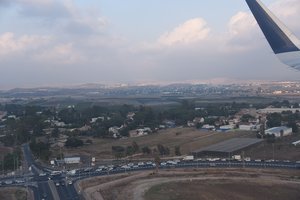
Esraj
The esraj (Bengali: এস্রাজ; Hindi: इसराज; English /ˈɛsrʌdʒ/; also called the Dilruba) is a string instrument found in two forms throughout the north, central, and east regions of India. It is a young instrument by Indian terms, being only about 200 years old. The dilruba (दिलरुबा) (From Persian: دلربا) is found in the north, where it is used in religious music and light classical songs in the urban areas. Its name is translated as "robber of the heart." The esraj is found in the east and central areas, particularly Bengal (Bangladesh and Indian states of West Bengal and Tripura) and it is used in a somewhat wider variety of musical styles than is the dilruba. Originally an Afghan Instrument it first appeared in the region during the Pashtun rule of Northern India.
The Dilruba originates from the Taus and is the work of the 10th Sikh Guru, Guru Gobind Singh, whilst that of the Taus was the work of Guru Hargobind (the sixth guru of the Sikhs). The Dilruba was then produced to replace the previously heavy instrument (the Taus). This attempt was intended to 'scale down' the Taus into what is now known to be the Dilruba. This made it more convenient for the Sikh army to carry the instrument on horseback.

Asereje
Mira lo que se avecina
a la vuelta de la esquina
viene Diego rumbeando
Con la luna en las pupilas
y su traje agua marina
va despues de contrabando
Y donde mas no cabe un alma
y se mete a darse caa
poseido por el ritmo ragatanga
Y el D.J que lo conoce
toca el himno de las doce
para Diego la cancion mas deseada
Y la baila, y la goza, y la cantaaaa...
Aserej, ja deje dejebe tudejebe de
sebiunouva majabi an de bugui an de buididip (3 times)
No es cosa de brujeria
que lo encuentre to los dias
por donde voy caminando
Diego tiene chuleria
y ese punto de alegria
rastafari afrogitano
Y donde mas no cabe un alma
alli se mete a darse caa
poseido por el ritmo ragatanga
Y el dijey que lo conoce
toca el himno de las doce
para Diego la cancion mas deseada
Y la baila, y la goza y, la cantaaaa
Aserej, ja deje dejebe tudejebe de
sebiunouva majabi an de bugui an de buididip (3 times)
A nanananananana...
Aserej, ja deje dejebe tudejebe
sebiunouva majabi an de bugui an de buididip (9 times)

Esraj
The esraj (Bengali: এস্রাজ; Hindi: इसराज; English /ˈɛsrʌdʒ/; also called the Dilruba) is a string instrument found in two forms throughout the north, central, and east regions of India. It is a young instrument by Indian terms, being only about 200 years old. The dilruba (दिलरुबा) (From Persian: دلربا) is found in the north, where it is used in religious music and light classical songs in the urban areas. Its name is translated as "robber of the heart." The esraj is found in the east and central areas, particularly Bengal (Bangladesh and Indian states of West Bengal and Tripura) and it is used in a somewhat wider variety of musical styles than is the dilruba. Originally an Afghan Instrument it first appeared in the region during the Pashtun rule of Northern India.
The Dilruba originates from the Taus and is the work of the 10th Sikh Guru, Guru Gobind Singh, whilst that of the Taus was the work of Guru Hargobind (the sixth guru of the Sikhs). The Dilruba was then produced to replace the previously heavy instrument (the Taus). This attempt was intended to 'scale down' the Taus into what is now known to be the Dilruba. This made it more convenient for the Sikh army to carry the instrument on horseback.
Latest News for: esraj
Debutantes, raga lajwanti, esraj and the ancient jodi pakhawaj highlights of Day 3
Esraj known as the ‘voice of the sikhs’
- 1
Article Search
Most Viewed
WorldNews.com | 01 Jul 2019
The Independent | 01 Jul 2019
South China Morning Post | 01 Jul 2019
WorldNews.com | 01 Jul 2019
The Independent | 01 Jul 2019
The Independent | 01 Jul 2019
WorldNews.com | 01 Jul 2019
















